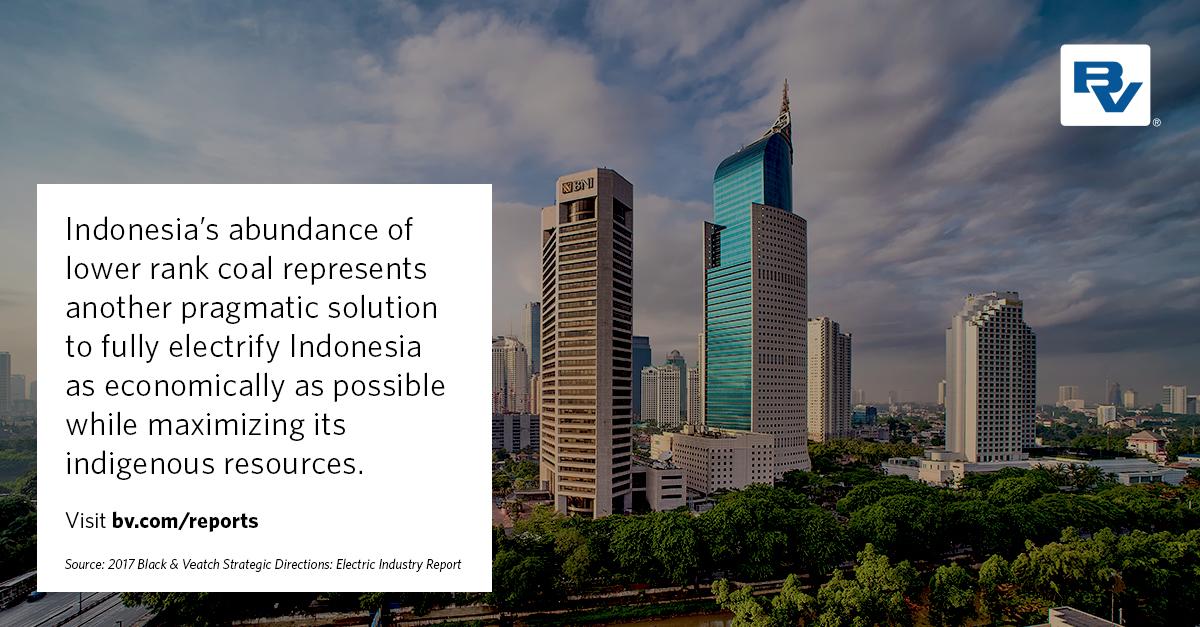Indonesia in Transition: Minemouth Coal and Hybrid Renewable Solutions
Indonesia continues to chase full electrification and grid stability

Indonesia, a nation of three time zones, thousands of islands and 250 million people, continues to experience major industrial and economic growth. Boasting vast untapped resources that include copper, gold, tin, nickel and coal, the mining sector will continue to play a significant role in the country’s development.
The provision of a secure, reliable power supply is critical for mining operations. Energy usage can account for up to as much as 50 percent of a mine’s operating costs. Indonesia, as it races through its transitional development phase, continues to chase full electrification and grid stability. Load shedding by overstretched electricity utilities can have a major impact on the profitability of mining operations.
Download the 2017 Electric Industry Report
Powering Today's Mining
Thousands of mining projects in Indonesia rely primarily on fossil energy such as coal and diesel to power their operations. This existing model is waning, however.
Diesel generation is causing operational challenges. Fluctuating fuel costs, high consumption, unreliable delivery channels and risky storage tanks can cause sleepless nights for many financial and operations managers. In off-the-grid mining areas such as Kalimantan, Sumatra and other eastern parts of Indonesia, operators often use diesel generation to fuel their entire operation. This option carries a high cost in terms of sustainability as well as operations.
Global shareholder pressures for more sustainable practices, uncertainty around local regulations and requirements as well as advances, availability and affordability of alternative technologies are also putting pressure on current practice.
Incorporating Renewable Energy in Mining
Enter “hybrid” deployments. This is the local terminology for burgeoning microgrids at mining sites that blend and combine traditional and renewable power sources and present mining companies a pragmatic transition to cost-effective and more environmentally sustainable operations.
Low to medium penetration of renewable power systems with diesel can meet 10 to 30 percent of a mine’s energy demand. By starting out to integrate renewable energy sources into their power portfolio, mining operators in Indonesia can significantly reduce fuel transportation costs and reliance on diesel supply, and increase resilience of their power supply. By utilizing renewable energy, whether solar, hydropower or wind, operators can better balance reliability and financial demands with social and environmental pressures.
Mine operators in countries like the United States, Canada, Australia and Chile have incorporated renewable energy into their power supply portfolio through utilization of hydropower, wind and solar energy. Black & Veatch estimates that an average remote project, with a power demand of 5 megawatts (MW), integrating wind power to generate 15 percent of the site’s energy supply, could save 10 percent in energy costs.
In addition to the emerging hybrid captive power trend in Indonesia, the government is planning and encouraging multiple coal minemouth projects. As part of the government’s 35 gigawatt power plan to close the nation’s electrification gap, PT Perusahaan Listrik Negara, Indonesia’s electric utility, envisages that 7,000 MW will be supplied through minemouth power.

